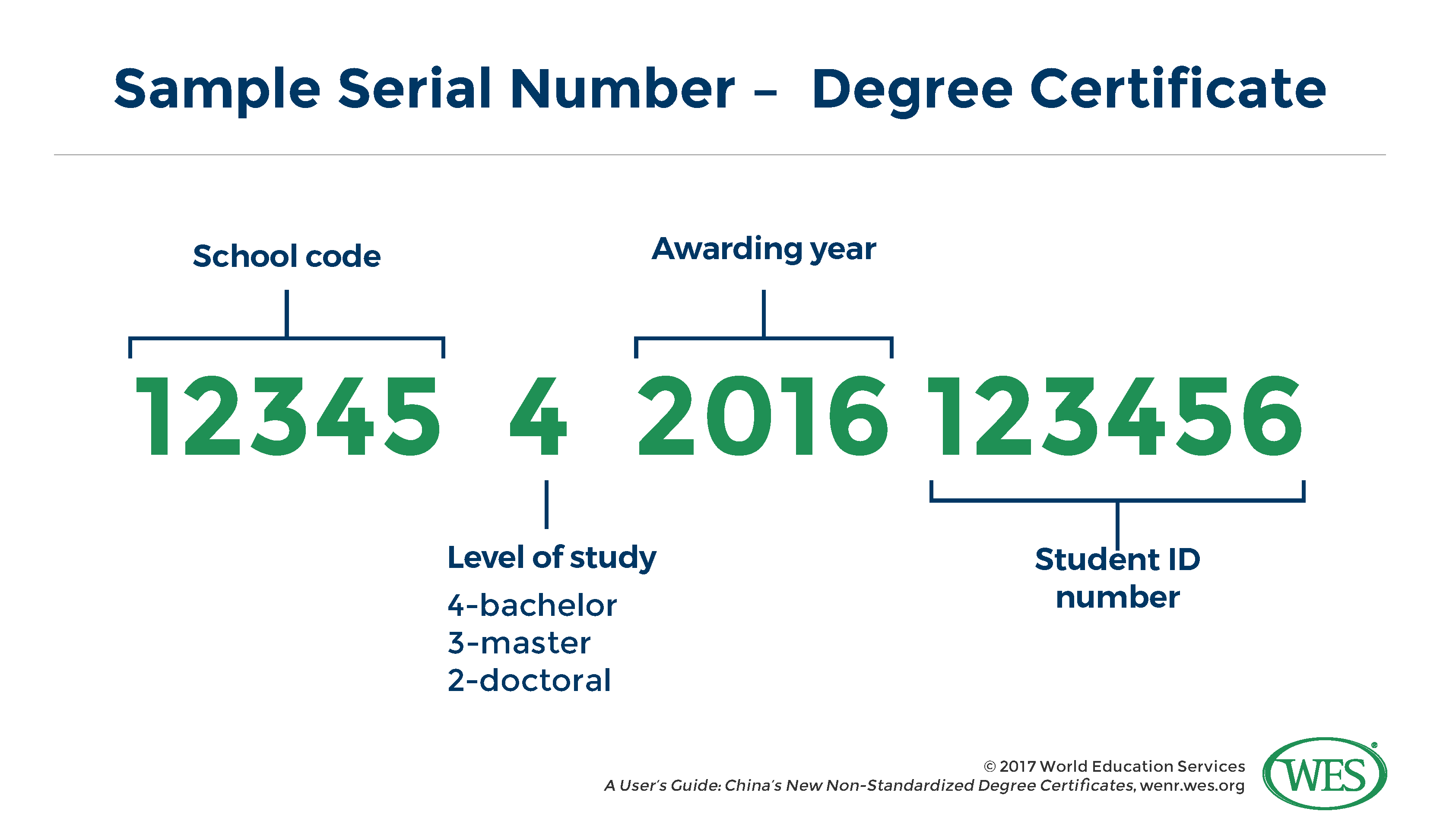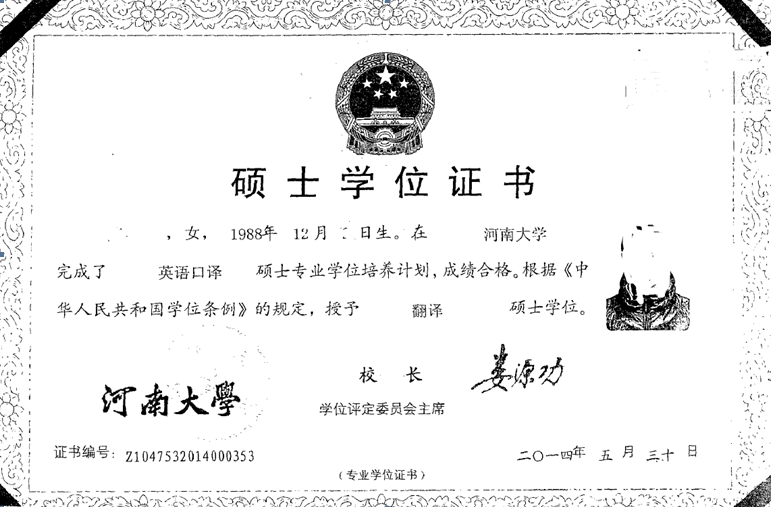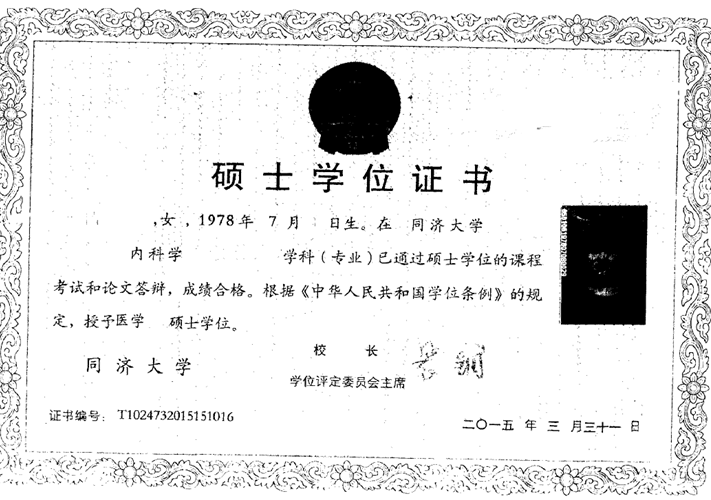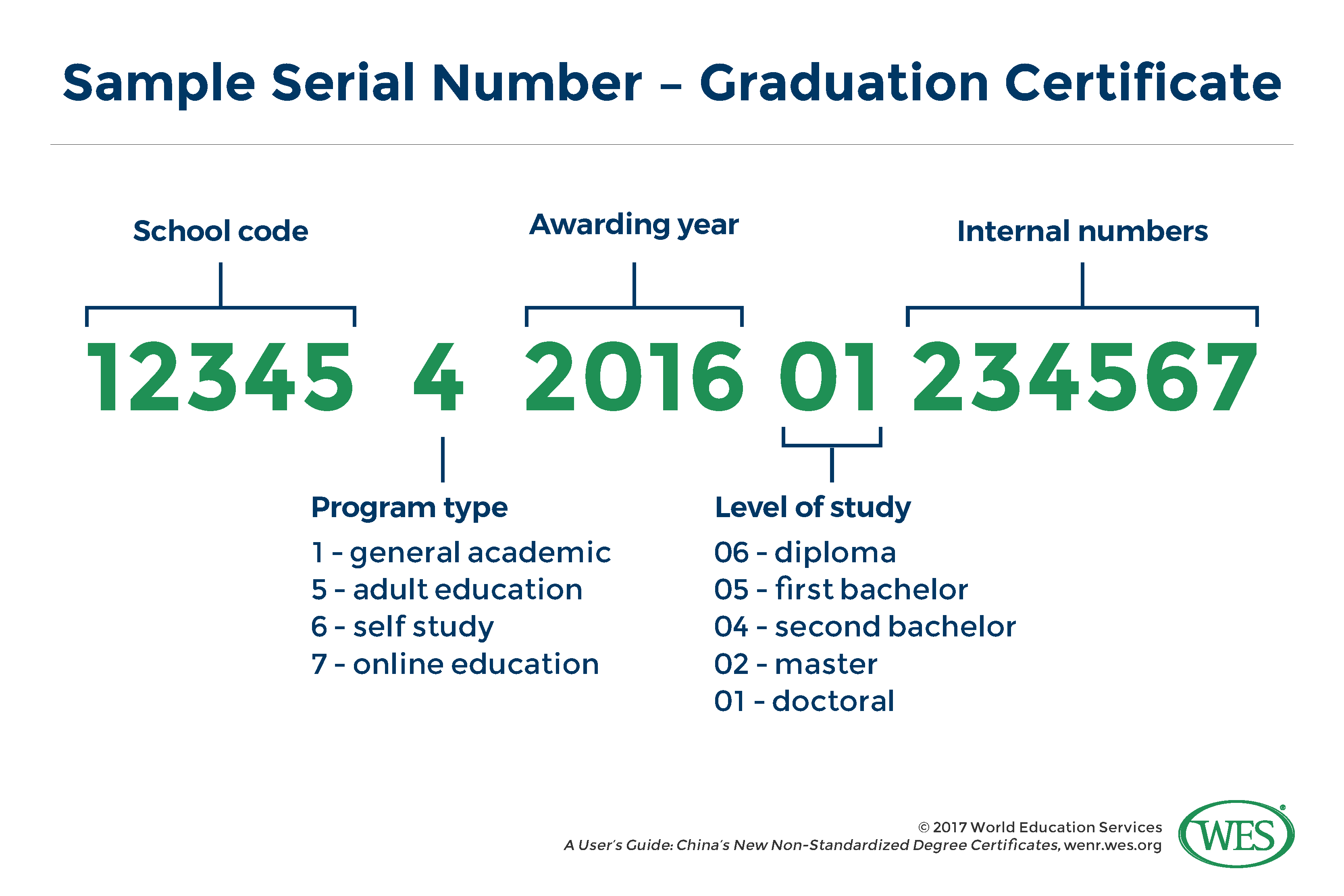Claire Mengshi Zheng, Credential Analysis Team Lead, WES
In July 2015, China’s Ministry of Education (MOE) announced a new policy giving each individual institution of higher education the right to design, print, and issue its own degree certificate. This policy [1], called “Measures for the Administration of Degree Certificates and Degree-Granting Information,” went into effect in 2016, when a handful of institutions began issuing degree certificates in new, non-standardized formats.
The change is just now making itself felt in significant volume in admissions offices around the world. It marks the end of an era for Chinese higher education degrees. Before the new policy, students were granted MOE-designed degree certificates. The design of these documents was standardized, making review relatively straightforward.
As the new, non-standardized degrees begin to proliferate, they are introducing considerable complexity into the work of anyone tasked with reviewing them. Given the hundreds of thousands of Chinese students who earn admittance to U.S. institutions each year, the burden on credential evaluators is significant.
Based on insights gained through review of thousands of documents at WES in recent months, this article provides a practical guide for reviewers seeking to verify these degrees. It explains:
- The difference between degree certificates and graduation certificates
- The distinct periods of Chinese degree certificate issuance over time
- What to look for when authenticating newly formatted degree certificates
Chinese Degree Certificates, Graduation Certificates, and Certificates of Completion
In the Chinese context, a degree certificate (or degree) signifies formal qualification at a specific level of academic achievement, while a graduation certificate merely indicates whether or not a student has graduated.Education in China [2]. Institutions may also issue certificates of completion or of study, when students fall short of graduation or degree requirements.
As noted in an earlier WENR feature on Education in China [2], graduation from programs at any level depends on completion of required coursework, as well as additional requirements, such as:
“short-term or long-term internships, social practice, external English tests, [or] a thesis. Upon completion, students are typically awarded two types of certification:
- A graduation certificate issued directly by the institution
- A degree certificate issued by the Academic Degrees Committee of the State Council
A graduation certificate is a prerequisite for receiving a degree. In cases where the student does not meet the requirements for a degree, they may still receive the graduation certificate.”
Degree certificates (degrees) are thus the highest level of qualification that can be granted to graduates at any level. Qualifications at different levels can be recognized by various indicators: For instance, doctoral degree certificates usually have a pink watermark; master’s degrees have a blue one, and bachelor’s a green. Other indicators such as serial numbers, discussed and diagrammed below, provide additional insight.
Other factors also influence the type of certificates students receive. These include:
- Admission quotas: The MOE sets aside an annual admission quota for each HEI each year. With the expansion of higher education, institutions sometimes admit students over and above their allotted quota. All students who fall within the quota and who successfully complete the program will receive a degree certificate. Those who are admitted beyond the quota are not eligible for a degree certificate. They may or may not receive a graduation certificate, depending on the program. Transnational programs offer a case in point: In the last decade, many Chinese institutions of higher education have established transnational programs (TNE programs). Some of the students in those TNE programs are admitted within the MOE quota. However, a substantial number are often admitted beyond quota.
- School registrar recommendations: Upon completion of an academic program, the school registrar determines whether a student has completed credit requirements of the curriculum and evaluates the student’s GPA, particularly in their major field of study. The registrar then makes a recommendation to the institution’s head, who makes a final determination about the type of certificate awarded.
- Poor grades: If students complete all courses within the curriculum, but failed too many subjects, they may be awarded a certificate of completion (结业证书-Jieye Zhengshu) rather than a graduation or degree certificate.
- Failure to complete the graduation requirements: If for some reason, students do not fulfill all graduation requirements, they will receive a certificate of study(肄业证书 Yiye Zhengshu) instead of a graduation or degree certificate.
- Lack of approval by China’s Degree Granting Committee: Not all accredited universities are approved by China’s DGC. As a result, not all accredited HEIs in China can grant degrees or issue degree certificates.
Evolution of Chinese Degree Issuance and Formats
1900-1949: Limited Degrees
At the end of Qing Dynasty, the Guangxu Xinzheng [3] revolution sought to modernize the country. The ensuing changes fundamentally altered the landscape of Chinese higher education, introducing a three-level hierarchy of bachelor’s, master’s, and doctoral level study. Fast-forward to the establishment of the Republic of China in 1912, and the hierarchy was further codified via legislation and practice. From 1935-1949, the Republic of China granted countless bachelor’s degrees and over 200 master’s degrees. No doctoral degrees were recorded having been granted by the Ministry of Education at this time.
1949-1977: System Expansion, and Then a Freeze
Following the establishment of People’s Republic of China in 1949, the higher education system underwent another major transition as China dramatically expanded the number, size, and role of HEIs in an attempt to replicate the Soviet Union’s rapid expansion of its higher education system [4]. Between 1950 and 1965, graduate level admissions rose to over 22,700. In 1966, the Cultural Revolution put a decade-long halt to this expansion. From 1966-1976, China issued no degree certificates, and students who completed their education during this period received only graduation certificates. Higher education (along with the gaokao [5]) was fully resumed in 1977.
1981-1985: A Single Format for Two Types of Certificates
Between 1981 and 1985, there was no distinction between degree certificates and graduation certificates. Only one certificate format was issued [6]. Students who met all requirements for a degree (over and above the requirements for graduation), received a document that includes a final sentence indicating the degree type. If students failed to meet all degree requirements, but still qualified to graduate, the sentence is missing. The document, still in common circulation among graduates from those years, is valid either as a degree or graduation certificate, as indicated by the presence or absence of that final sentence.
1985-2015: Two Certificates, Standardized Formats
The dual certificate system was introduced in 1985. It was at this point that the degree certificate format was made distinct from the graduation certificate format. The MOE originally designed and printed all certificates in both formats.
- From 1985-2008, the official, standardized degree certificate format was two-sided, and it folded from left to right. After 2008, it became a single-side, non-folded page.
- From 1985-2001, the MOE printed and issued all graduation certificates in a standardized format. In 2001, the ministry empowered individual schools to issue and print their own graduation certificates following the prescribed MOE format. To minimize the proliferation of fraudulent documents, the MOE implemented a digital registry system [8], and required institutions to register every graduation certificate granted.
2016: Non-Standardized Degree Formats
In 2016, China’s MOE [1] officially stopped requiring that individual institutions use a standardized design for degree certificates, and allowed them to print their own. Under the new policy, certificates must still include certain standardized elements, however. These are:
- The student’s name, date of birth, and gender
- A recent picture
- The credential name (e.g., Bachelor of Arts, Master of Science, Doctor of Engineering) as well as the student’s major
- The name of the awarding institution
- An issue date
- An MOE-sanctioned degree serial number (see tips on authenticating serial numbers below)
- The signature of the institution’s principal (the equivalent of a chancellor at a U.S. institution)
- An institutional seal or stamp across the student’s picture
The 2016 policy does not require the inclusion of China’s national emblem. Prior to 2008, the emblem was typically placed on left side of degree; after 2008, it was typically placed in the upper central part. Many institutions have begun to replace the national emblem with their school logos.
Degree Certificate Serial Numbers: A Practical Guide
Each degree certificate carries with itself a 16-digit serial number that is issued and sanctioned by China’s MOE:
- The first five digits represent the school code
- The sixth digit represents the level of study completed (The doctoral level is 2; the master’s level is 3; and bachelor’s level is 4.)
- The 7th-10th digits represent the awarding year
- The last six digits are individual student identification numbers issued by awarding institution
Special Cases: Professional Degrees, Tongdeng Xueli Degrees, English-Language Documents
The concept of professional degrees (vs. academic degrees) was introduced in the early 1990s in China. Currently, China has one type of professional bachelor’s degree, forty professional master’s degrees, and six doctoral level degrees. The serial numbers for professional degree certificates start with the letter “Z,” representing Zhuanye(专业) – professional in Chinese. Numbers that begin with “Z” are mostly graduate level degrees, such as graduate medical degrees.
Tongdeng Xueli degrees are associated with part-time, master’s level programs designed for working professionals. These programs, which have lower admission requirements than full-time master’s programs and are generally shorter in length, are increasingly popular. The serial numbers for Tongdeng Xueli degree certificates start with the letter “T.”
Some institutions issue English versions of the degree certificate. For instance, most 211 and 985 schools issue English-language versions of their degree certificates. China also hosts a sizable number of international students. Those students are often granted English versions of their degree certificates in addition to the Chinese version.
Graduation Certificate Serial Numbers: A Practical Guide
Graduation certificates also have a serial number. They are usually 18-digits. From 2002 forward:
- The first five digits represent the school code
- The 6th digit indicates the program type (For instance, 1 represents general academic, 5 represents adult education, 6 represents self-study; 7 represents online study.)
- The 7th-10th digits represent the awarding year
- The 11th-12th digits represent the level of study completed (For instance, 01 for doctoral level, 02 for master level, 04 for second bachelor, 05 for first bachelor, and 06 for diploma.)
- The 13th-18th digits are internal numbers
References
| Education in China [2]. Institutions may also issue certificates of completion or of study, when students fall short of graduation or degree requirements. |
|---|








